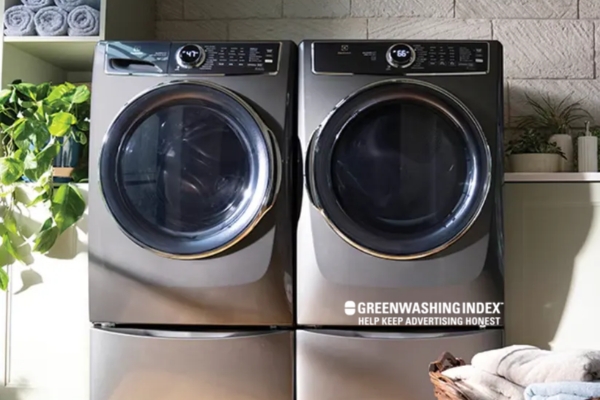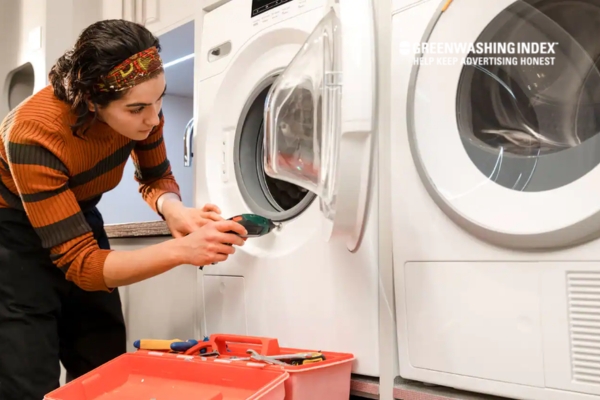Have you ever wondered about washer and dryer disposal that doesn’t hurt our Earth? Maybe you have an old set lying around or are upgrading to a shiny new pair. Whatever the case, getting rid of them in an eco-friendly way is more important than most of us realize. Sit tight because I’m about to share some easy and responsible ways to say goodbye to your trusty appliances without causing harm to the planet.
When it comes time for washer and dryer disposal, the key is to think “green.” Start by checking if they’re still working. If they are, consider donating them; many charities would be glad for the help! If they’re on their last legs, look up local recycling programs that take washers and dryers. Making sure these big machines don’t end up in a landfill keeps harmful materials out of our environment—plus, it might make room in your home for something new!
What You’ll Learn Here:
- The best eco-friendly washer and dryer disposal methods
- Tips on donating your old machines responsibly
- How recycling can save the environment—and your conscience!
- Ways to extend the life of your appliances before saying goodbye
Eco-Friendly Disposal Options of Washer and Dryer
When it comes to washer and dryer disposal, I always look for eco-friendly options. It’s important not only to help our planet but also to make sure we’re following responsible disposal practices. There are several ways you can say goodbye to your old appliances without harming the environment.

Donating Functional Appliances
One of the best options out there for washer and dryer disposal is to donate them. If your appliances are still in working order, it’s a shame to just throw them away. There are many organizations that will gladly accept used washers and dryers. They often offer pick-up services, so you won’t have to worry about how you’re going to move these heavy items.
Places like Habitat for Humanity Resale Stores, Salvation Army, or local thrift shops can be a good home for your used appliances. These donations help low-income families furnish their homes at an affordable price while keeping perfectly good machines from ending up in a landfill.
Before I donate my washer or dryer, I make sure they’re clean and in decent working condition. This way, someone else can get plenty of use out of them without any hassle.
Recycling Programs for Washers and Dryers
Another eco-friendly way of disposing of your old washers and dryers is through recycling programs. A lot of cities have local recycling centers specialized in washer and dryer disposal, where they take apart the machines and recycle various parts responsibly.
Metal parts from these appliances can be melted down and made into other products, which is much better than mining new metals from the earth. Plus, some parts might even be refurbished or reused as replacement pieces in other machines!
To find such recycling programs near me, I usually do a quick online search or call up my local waste management services. They often provide details on whether they accept washers and dryers as well as any preparation needed beforehand, such as detaching hoses or cords.
Repair Before Replacement
Sometimes, when we think our washer or dryer has bitten the dust, it might just need a simple repair! Before rushing into disposal mode, check if repairing could be an option.
Repairing these large appliances can not only save you money because it’s usually cheaper than buying new ones but also reduce environmental impact significantly by extending the life of existing products instead of generating more waste.
I try to educate myself on common appliance issues that might arise with a little online reading or consulting with local repair services before deciding whether fixing is possible, given the condition of my appliance. Doing this helps make sure that our choices are both smart financially and kinder to Mother Nature.
Planning Your Washer and Dryer Disposal
When the time comes to say goodbye to your old washer and dryer, it’s important to do it the right way. Knowing when and how to properly dispose of these large appliances can be a bit tricky. I want to share with you how you can recognize when it’s time for disposal and make sure you do it in an eco-friendly manner.

When Is It Time to Dispose?
Now, let’s talk about when it is time to let go of your washer or dryer. Here are some clear signs:
- Age: If your washer or dryer is older than ten years, chances are they’re not as efficient as they used to be. Older models can use more water or electricity, which isn’t good for our environment or your bills.
- Frequent Repairs: Have you been calling the repair person a little too often? If fixing your appliance becomes a regular event, that’s a red flag you might need an upgrade.
- Efficiency: Modern washers and dryers have energy-saving settings that weren’t available in older models. If yours doesn’t have these options, consider disposing of them, as they could be harming the planet more than helping.
- Noise: A loud appliance is not just annoying; it could also indicate that something internal isn’t right. A machine that makes more noise than usual may be struggling and, thus, less efficient.
- Leaks: Water on the floor? That’s not good! Leaks can cause damage not only to the machine itself but also to your home, leading to potentially costly fixes down the line.
- Performance Issues: Are your clothes still damp after a cycle in the dryer? Or maybe they don’t feel clean from the washer? Poor performance is a major hint that these machines may need replacing.
These points should serve as helpful indicators for when it might be time for washer and dryer disposal.
How Do You Prepare Your Washer and Dryer for Eco-Friendly Disposal?
When I think about washer and dryer disposal, I always want to make sure it’s done right. Doing things the eco-friendly way is important for our Earth.

Clean Out Before You Clear Out
Before saying goodbye to your old washer and dryer, preparing them properly can help a lot. Donating or recycling these big machines is a great choice, but first, they need to be ready.
First thing first: unplug your washer and dryer. This makes sure they’re safe to touch. Now, let me walk you through some simple steps.
For my washer:
- Empty it – Make sure there are no clothes inside.
- Clean it – Wipe down inside with a simple cleaner (like water mixed with soap).
- Check the pockets of any clothes last washed – you’d be surprised what might come out!
- Let it air dry by leaving the door open so all the water evaporates.
And for my dryer:
- First, I remove all lint from the lint trap (this is very important).
- Then, I do a quick clean inside with a damp cloth.
- Finally, unhook any parts like hoses or vent ducts if you can do so safely.
Now, both machines should look pretty okay! They’re not just clean on the outside but also ready on the inside for their next home or recycling journey.
Remember: When planning your washer and dryer disposal, think eco-friendly. Preparing them cleanly can even give them new life if someone else uses them again!
Conclusion
Disposing of a washer and dryer might seem daunting, but there are eco-friendly ways to handle it. I’ve shared methods that help the environment and can even help other people. From donating still-functioning appliances to finding specialized recycling programs, we have options. Repairing an appliance is yet another way we can reduce waste. Considering these choices not only eases our conscience but also ensures we do our part for the planet.
Key Takeaway Points
- Donate workable washers and dryers if possible.
- Utilize recycling programs dedicated to eco-friendly appliance disposal.
- Repair, don’t just replace—consider fixing before throwing away appliances.
- Understand when it’s time for a new machine; look out for those tell-tale signs.
- Prepare your machines properly by cleaning them before donation or recycling.



